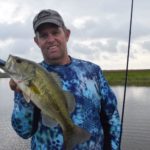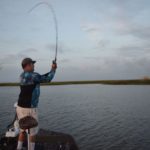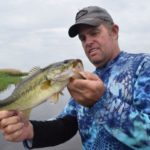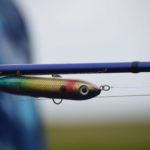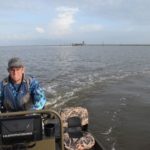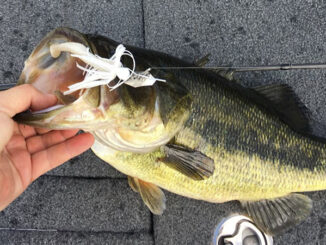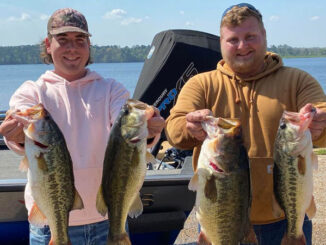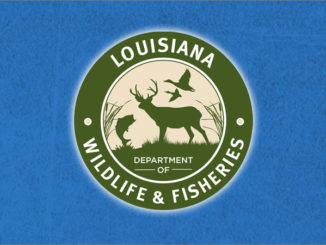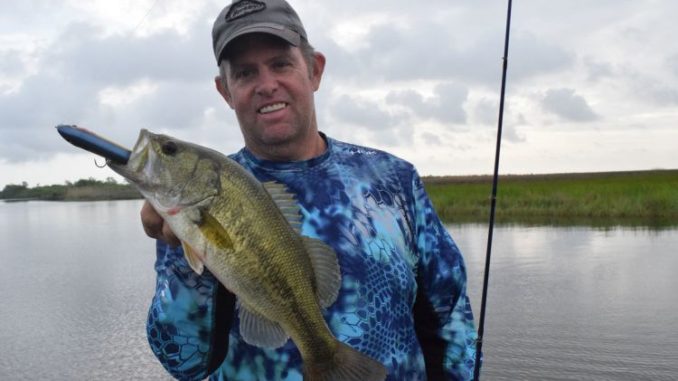
‘Green trout’ are on fire in the ponds and marshes off the East Pearl River this month. Here’s one local angler’s plan of attack.
As Jeff Bruhl left the north shore of Lake Pontchartrain and went down Interstate12, the sky spit droplets on his truck’s windshield. And as he pulled up to the East Pearl River launch, things even got a little gloomier: His trailer tires were the only ones touching the gravel parking lot.
There wasn’t another boat to be found.
Perhaps that was because it was a Monday morning. Or maybe it was due to the Pearl River being at 15 feet, making the water look like melted chocolate.
Whatever the reason, Bruhl had the launch all to himself —and saw only three bass anglers all day long.
As Bruhl backed his Gator Trax off the trailer, the sun still hadn’t made much of an appearance, which was beneficial.
He made his way to a pond off the Rigolets he heard about from a friend that allegedly had bass up to 4 pounds in it.
When he arrived, however, the water was muddy due to high winds. He tried to putt around the pond to search for clean water, but he was unsuccessful.
He quickly put his boat back on plane, and left with some casting practice, about 1,932 gnat bites and a wet buzzbait.
The tournament angler then scoured around and found a good-looking pond on the north side of Lake Catherine. It had all the right ingredients: Bait, crystal clean water and tons of grass.
But, unfortunately, the pond didn’t produce, leaving Bruhl’s livewell dryer than August asphalt.
Even though two hours had burnt off the clock with nothing to show for it, Bruhl didn’t fret in the least.
He headed for Geohagan’s Canal, a popular destination for wintertime speckled trout — but one that also houses bass this month.
The avid angler began casting a Zara Super Spook Junior along a bait-loaded shoreline, and within his first few casts, Bruhl hooked a trout — and it wasn’t a green trout.
A 15-inch speck came splashing over Bruhl’s gunnel. Although it wasn’t the right species, he was encouraged by what he saw. He continued chucking his topwater on the grass edge, and once he reached a point in the shoreline, Bruhl caught several bass up to 2 pounds — quite a sight on topwater.
After the bite played out, Bruhl ran to Sawmill Bayou, and he found a load of fish stacked on a point. The fish were gobbling up Flukes, lizards and worms, but, oddly enough, Bruhl couldn’t get them to touch a topwater lure.
Keys to catching
This time of year, Bruhl fishes marsh bass a whole lot, and he said there are several keys to success.
One of the first is to identify which stage of the spawn the fish are in.
“(Last year) was kind of warm, so the spawn is over with, but if I think they’re spawning, I’m going to go in the back of the ponds,” he said. “If they’re done spawning, I’ll go hunt the baitfish, and they might be at the run-outs and mouths of the main bayous.”
But the main bayous can be tricky. Filthy freshwater from the Pearl can plague them, according to Bruhl.
“If the water gets high enough, they’ll all be muddy,” he said. “There are certain bayous that face against the river flow, and they’re clean (most of the time.) They’re pretty protected from the flooding river.”
When fishing the bayous, Bruhl positions his boat in the center, and casts toward the shoreline. Some shorelines have grass that meets right up to the bank. In that case, Bruhl casts on the edge of the grassline and works his bait toward the middle.
However, some bayous have grass toward the middle, leaving a donut of no grass on the edge. When this scenario is presented, Bruhl throws his bait between the bank and the inner edge of the grass line.
“A lot of times, I am just looking for grass mats, and I’m flipping and pitching around it to see if I can get something to come out and take the bait,” he said.
Gauging the grass
When he’s targeting the ponds, Bruhl likes hunting down the vegetation.
“Most of the ponds aren’t but about 2 or 3 feet,” he said. “You want to fish around the patches of grass. Sometimes you’ll throw frogs on top, and sometimes, if you’ve got a little depth, you can throw worms in the middle.”
Many bass anglers always want to work the shoreline, but Bruhl said that’s a big mistake.
“I’ve seen it where you go right in the middle of the pond with just a little popper, and if the water is high enough over the grass, you can catch a lot of fish doing that,” he said.
What lures Bruhl fishes depends on the height of the water in the ponds. Some ponds are naturally deeper or shallower, but a large portion of the depth is affected by the tide.
“If you have grass that’s pretty high, you’re going to have to use a frog or a Fluke,” he said.
Bruhl actually prefers the ponds when they’re low.
“When you get a northerly flow to push the water out of the ponds, that’s when you start looking at them,” he said. “That north wind will drain some of the ponds.”
If the grass is short from the bottom, or if the tide is high, Bruhl likes working light Texas-rigs around the grass.
One thing that is of no shortage in the marsh this time of year is prey, according to Bruhl.
“In the springtime, you’re going to have bait just about everywhere,” he said. “Shad will migrate in and out of the Gulf this time of year, and mullet will start spawning.”
Topwater baits are exciting no matter the species you’re fishing for, and surface lures are always tied on in Bruhl’s boat.
“If you have a cloudy day, you can fish (topwater) all day long,” he said. “Most of the time when the sun comes out, you’re going to have to pitch something, or throw a Texas rig to get the bite.”
If you’re a bass purist, fishing the marsh probably isn’t the best place. That’s because it’s virtually impossible to target bass without bumping into other species.
“You’ll find (redfish) mixed in with the bass,” Bruhl said. “Usually if you’re catching reds that means the bass are right there with them because the food is there. They feed off the same stuff.”
Marsh bass aren’t known to be monsters, and that’s particularly true after the spawn.
“Once the spawn is over, if you catch 1- or 2-pound fish, that’s normal,” Bruhl said. “You’re not going to win many tournaments in these areas. It’s more of a fun-fishing kind of place.”
One of the biggest keys to catching bass this time of year is to move until you find the fish.
“The fish are going to be in tight, little groups,” he said. “You might go along the bank and not get a bite, and then you might catch four or five fish off a point, a drain or just down the bank somewhere.”
Fishing the bayous and ponds off the East Pearl is a great way to help youth get into bass fishing, according to Bruhl.
“If you’ve got kids you want to teach how to fish, give them a red-shad worm, turn them loose and they’re going to catch fish,” he said.
